Discover Alquézar: A Hidden Gem in Northern Spain
Friday, November 29, 2024
Nestled in the northeastern region of Aragon, Spain, the medieval village of Alquézar captivates with its rich history, breathtaking natural landscapes, and old-world charm. Whether you are an adventurer, a history enthusiast, or someone simply looking to soak in the picturesque surroundings, Alquézar offers an authentic experience far removed from the bustling tourist trails.
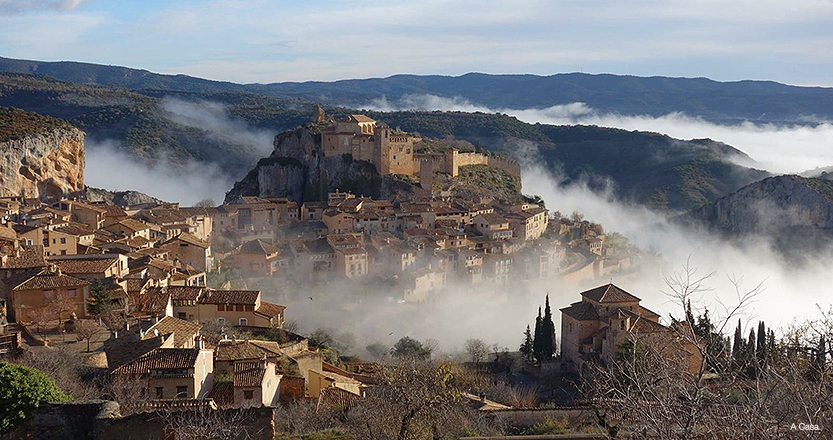
Alquézar is located in the heart of the Huesca province, perched gracefully at the foothills of the Spanish Pyrenees. This village, which offers a stunning vista over the Vero River Gorge, has been meticulously preserved and boasts a sense of timelessness. The narrow winding streets, cobblestone paths, and stone houses transport visitors back to a bygone era, offering a glimpse into Spain's rich medieval history.
As you meander through the village, you cannot help but be enchanted by the rustic charm and architectural beauty that characterise Alquézar. Its medieval layout has remained largely unchanged over the centuries, making it an inviting place to wander leisurely and discover hidden corners, quaint squares, and historical sites.
Alquézar is not just a feast for the eyes; it is also a treasure trove for archaeology enthusiasts. The village is located in the Vero River region, part of a UNESCO Global Geopark known for its significant archaeological sites. Visitors can explore ancient cave paintings and unique geological formations that date back thousands of years through guided tours. These fascinating rock art sites offer an extraordinary insight into human history and prehistoric life in the region.
For those with a penchant for culinary delights, Alquézar is a part of the renowned Somontano wine region. This area is celebrated for producing exceptional wines, with a particular emphasis on robust reds and delicate rosés. Visitors have the opportunity to savour these local wines in charming restaurants and tapas bars scattered throughout the village, where the traditional Aragonese cuisine is served with hearty hospitality.
Indulge in regional specialities such as migas, a comforting dish of fried breadcrumbs with chorizo, and enjoy the exquisite flavours of ternasco, a succulent roast lamb. To complete your culinary journey, do not miss the chance to taste the delectable fresh river trout, sourced directly from the nearby Vero River.
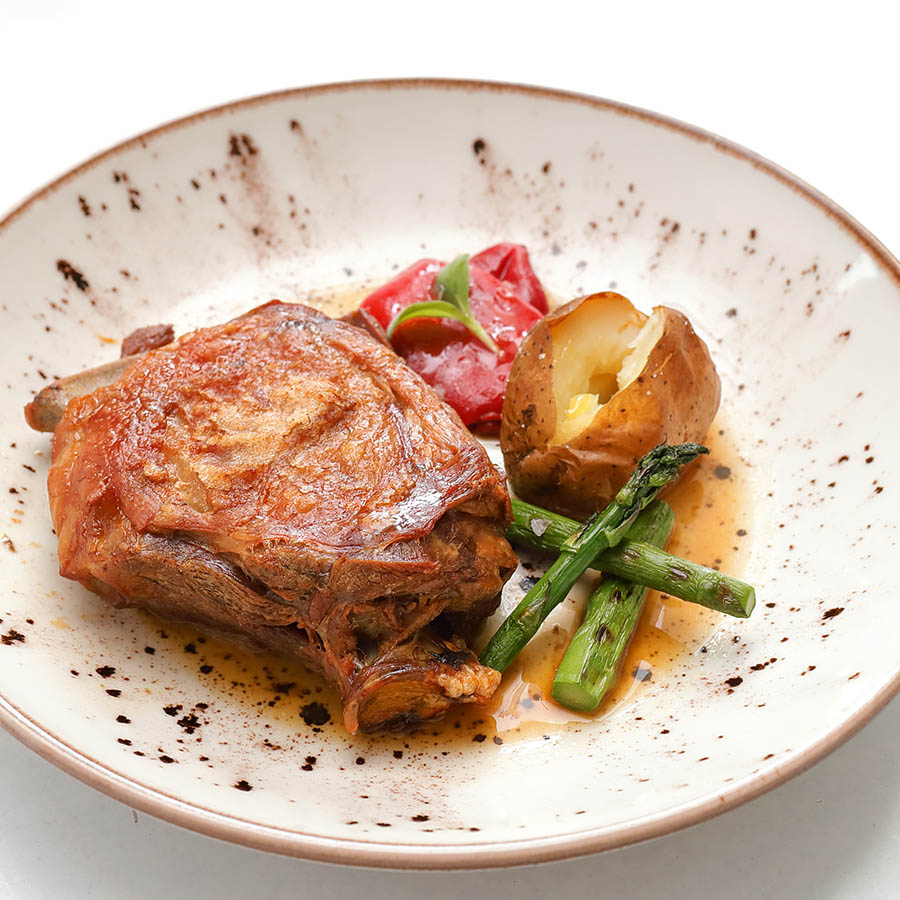
Alquézar is a paradise for outdoor enthusiasts and adventure seekers. The village serves as a gateway to the Sierra de Guara Natural Park, a renowned location for canyoning, a thrilling sport that combines hiking, climbing, and swimming through rivers and canyons. Companies in the area offer guided tours for those eager to explore the Vero River Gorge, ensuring a safe and exhilarating adventure amid the stunning natural landscape.
One of the most popular excursions in the area is the Pasarelas del Vero, an unforgettable river walkway. This scenic route takes you along a series of suspended walkways and bridges that provide incredible views of the gorge and village from below. The hike is relatively easy and is dotted with natural pools, perfect for a refreshing dip during warmer days.
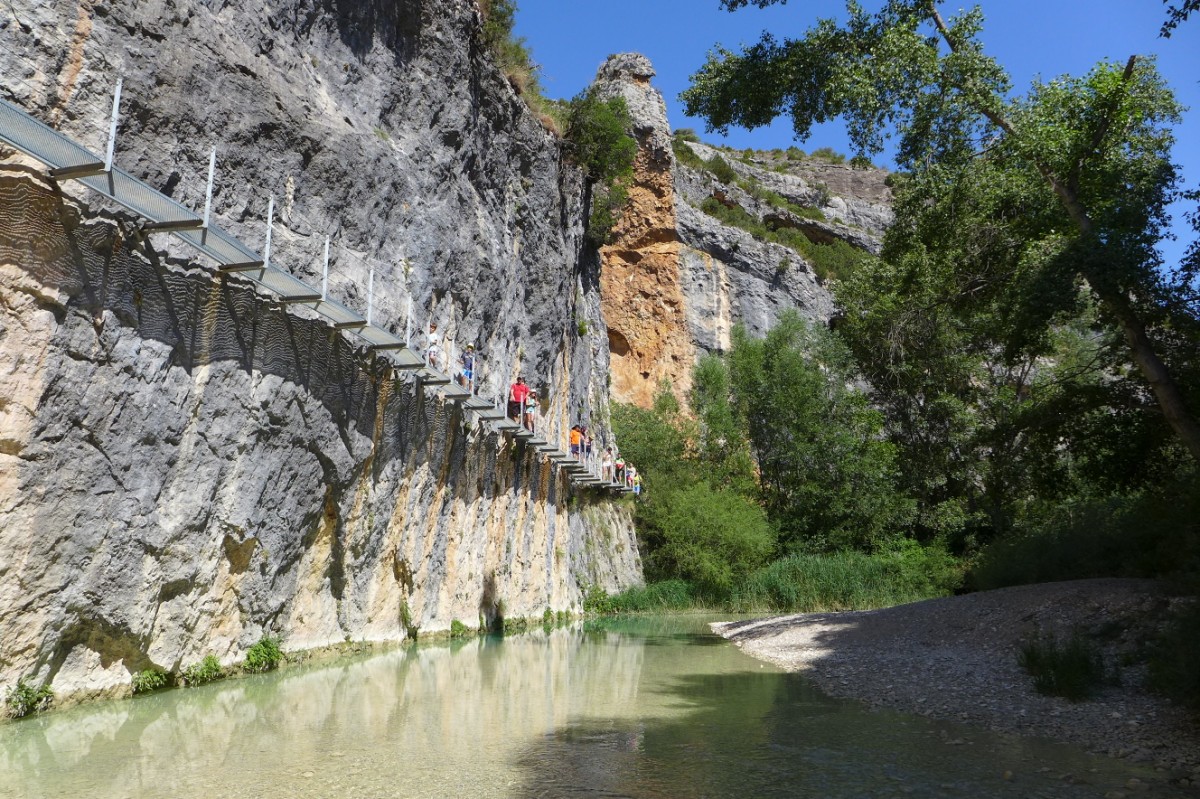
Those fortunate enough to have discovered Alquézar often recount their experiences with fondness and admiration. Many travellers have shared their thoughts on platforms like TripAdvisor, highlighting the village’s unique charm and the delight they found in exploring its hidden corners.
A visitor recounted: "We were passing close to Alquézar on a road trip and decided to drop by. We’d read about the Pasarelas del Vero, so we thought we'd give it a go. It was really cool, with amazing views and an incredible feat to build the walkways. Visiting when it wasn't too busy made it even more enjoyable. You can grab some great food in Alquézar afterwards while watching the Griffin vultures soaring overhead."
Another traveller shared their experience, describing the quaint Plaza Rafael Ayerbe, a small square in the old town: "Plaza Rafael Ayerbe is one of some little squares located in the old town of Alquézar, a tiny and Middle-Ages town in the Huesca Region, in the North of Spain. If you walk around the old town, I am sure you will see it — a very tiny square where you can see very beautiful buildings. In fact, it is a porticoed square where you can feel the presence of the past."
Alquézar isn’t just a village; it’s an experience—a magical place where history, nature, and culture intertwine seamlessly. Away from the crowds that flock to more prominent destinations, this hidden gem allows visitors to connect with authentic Spanish heritage and the serene beauty of its natural surroundings. Whether indulging in local delicacies, exploring ancient sites, or embarking on thrilling outdoor adventures, Alquézar promises an unforgettable journey that captivates the heart and soul. For travellers seeking a unique adventure in Spain, Alquézar is truly a destination worth discovering.
 2
Like
Published at 8:02 PM Comments (0)
2
Like
Published at 8:02 PM Comments (0)
One of the Most Beautiful Towns in Spain and the World
Saturday, November 23, 2024
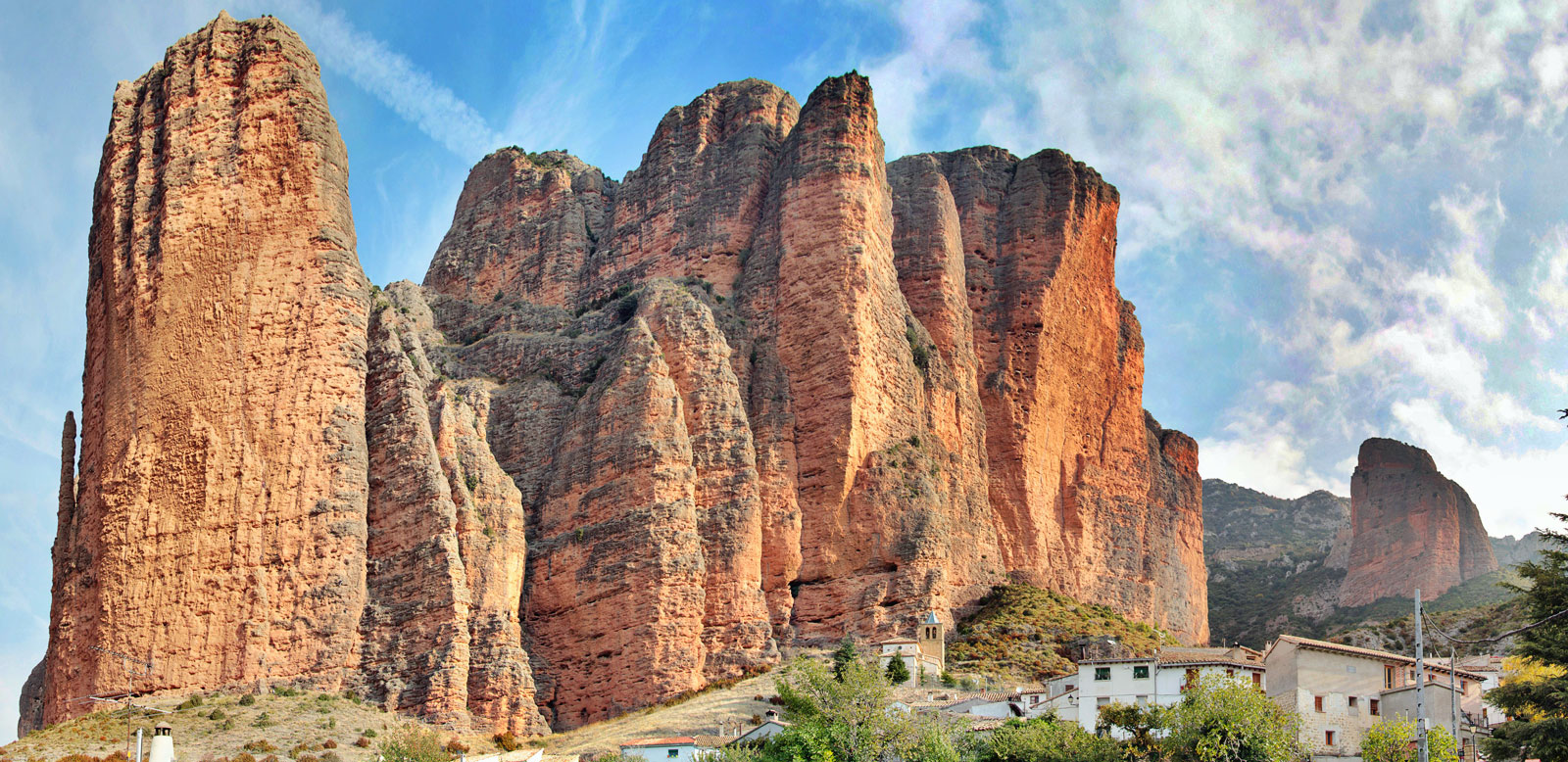
I am sure that very few had heard of Riglos until the French newspaper Le Monde placed this small town of about 250 inhabitants in the pre-Pyrenean region of La Hoya de Huesca in seventh position in its special ranking of the 20 most beautiful towns in the world (and only Spanish one) that it recommends visiting.
The reason is not lacking for the publication, because the picturesque municipality of sloping white houses, on the banks of the Gállego River, is located in a spectacular natural setting, unique in Aragón, declared a Natural Monument for its scenic value and headed by impressive geological formations reddish in colour with vertical walls up to 300 m high, called Mallos.

This location is a great attraction for climbers, hikers and fans of birds of prey, the town is located at the foot of those imposing walls, formed over millions of years, which makes it inevitable to raise the view (and the camera lenses) towards its peaks while strolling through its streets. The charm of the town centre is in the tranquillity of the surroundings and in the simplicity of its stone constructions. At the entrance to the town, the small Romanesque hermitage of San Martín (12th century) stands out, with a single nave, while, in the upper part, almost at the base of the Mallos, the imposing church of Nuestra Señora del Mallo (s XVII), with three naves and a square-shaped tower with a bell tower, is the most emblematic construction in the town, whose setting, with the rock formations in the background, is one of the most beautiful in the area.
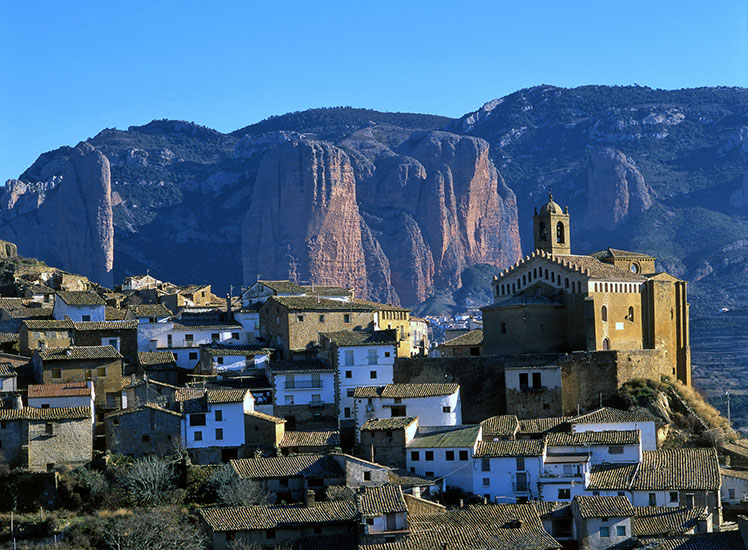
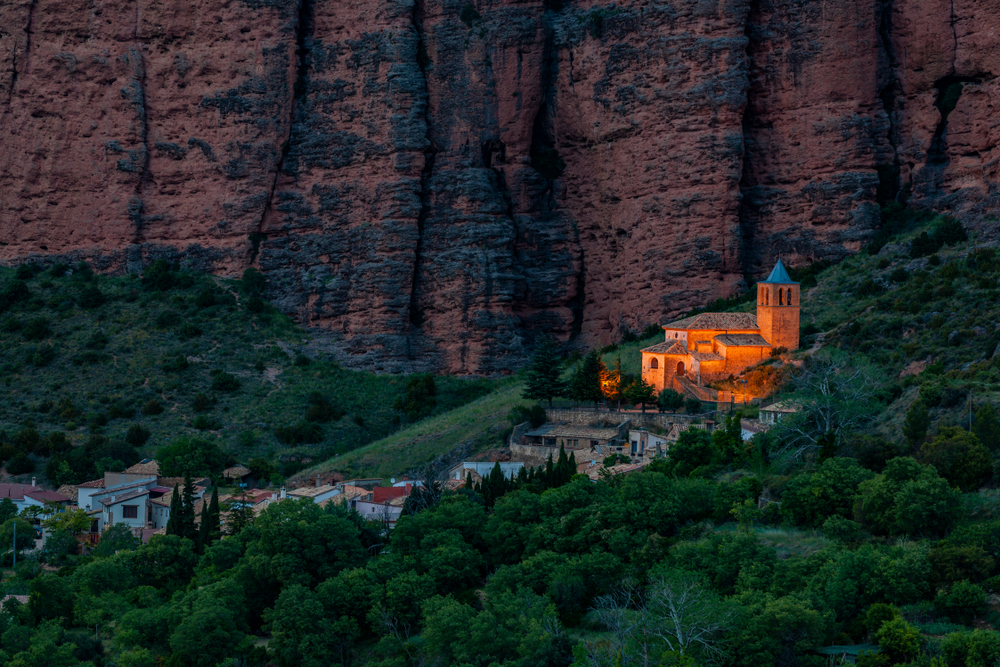
In recent years, the Mallos de Riglos has become a mecca for climbers from all over the world, thanks to the more than 200 existing climbing routes, most of them of high difficulty. Ornithology lovers also have an interesting place here due to the enormous presence of rock-dwelling birds, which have their habitat in the multiple hollows of the Mallos. These birds, mostly protected raptors, such as vultures, bearded vultures and Egyptian vultures, can be seen flying over the rounded tops. Specifically, in the Wall of the Vultures, there is one of the largest colonies of this species in Europe.
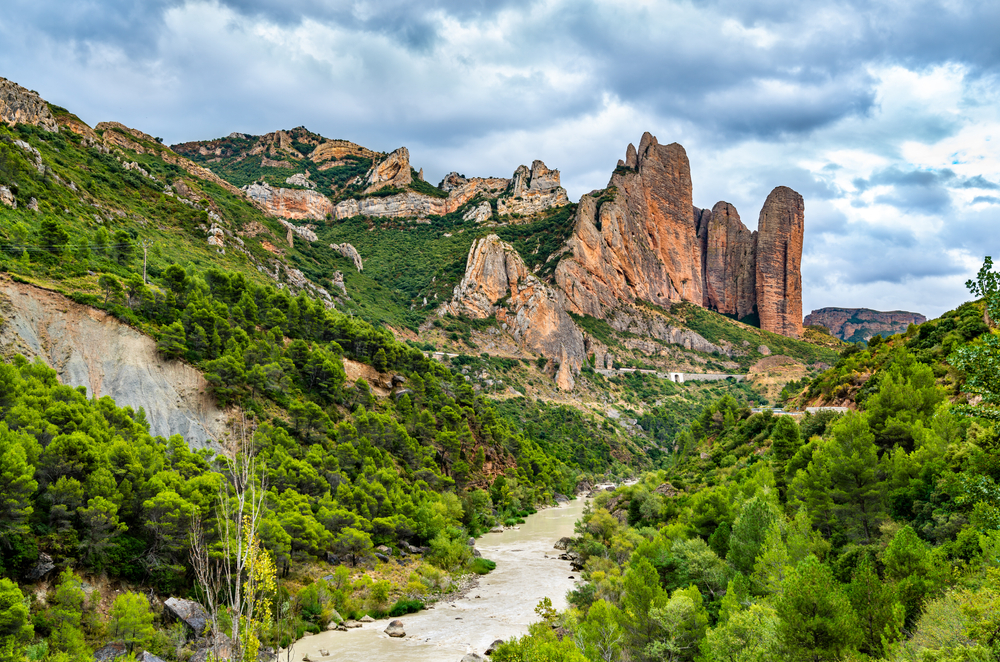
To get a better view of the Mallos, there are several signposted hiking trails that run through these impressive formations. One of the most popular is the so-called Vuelta a Los Mallos de Riglos, a circular route of about 5.5 km (about two and a half hours) that allows you to contemplate the grandeur of the enormous vertical stone walls from all sides. The path begins in the same town, ascends between the easternmost Mallos and passes through several viewpoints, the Vultures, the Espinalba or the Mallos de Riglos, with the river Gállego in the foreground.
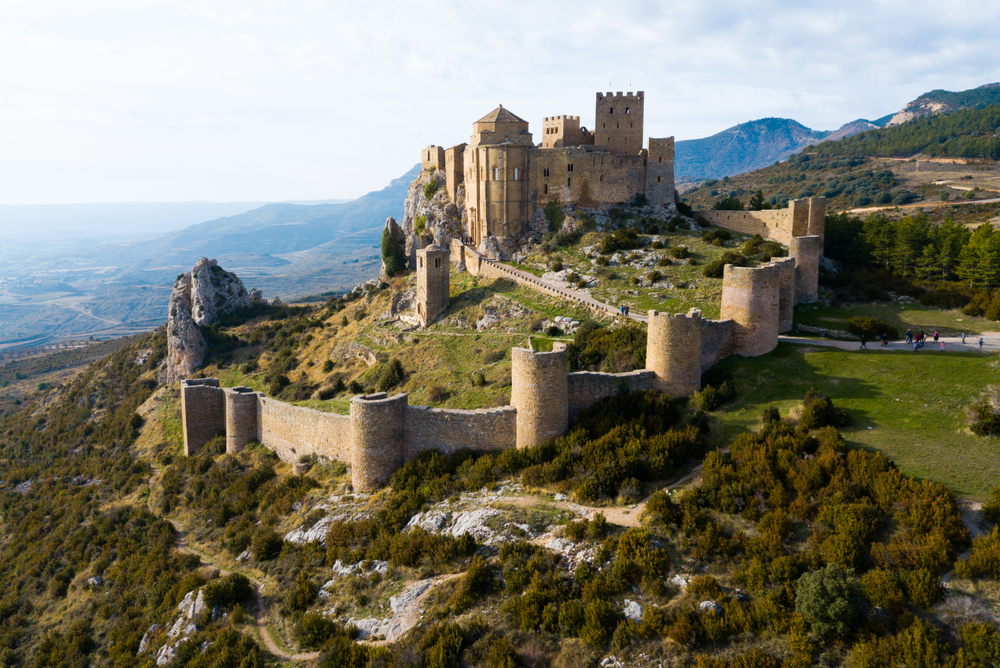
Just 20 km from Riglos is one of the most incredible buildings in Spain, a must-see if you are in the area. It is the Loarre Castle, one of the most beautiful and best-preserved fortresses in our country. Considered one of the most important Romanesque ensembles in Europe and declared a Site of Cultural Interest and a National Monument, the medieval castle, built in the 11th century by Sancho III, stands on a promontory of limestone rock in the Sierra de Loarre, Huesca.
The complex is surrounded by a great wall built-in 1287 that covers some 10,000 square meters and has a perimeter of 172 meters. Inside the fortress, the small chapel, the crypt of Santa Quiteria and the church of San Pedro stand out. Despite being almost 10 centuries old, its state of preservation is excellent. In addition to hosting events, the castle has been the setting for several films, such as Ridley Scott's Kingdom of Heaven (2005). It is open for visits on weekends and holidays.
 3
Like
Published at 1:19 PM Comments (0)
3
Like
Published at 1:19 PM Comments (0)
A Pharmacy established in the 15th Century
Friday, November 15, 2024
The pharmacy of today is sterile, white and efficient. Each medicine bottle or box is the same, and patients make their way in and out without lingering. However, 500 years ago, the local pharmacy was less science and more art, and the Esteve Pharmacy Museum in Llívia, Spain captures this ideal in the vibrant colours and luxury of a medieval European apothecary.
Established in the 15th century, the Esteve Pharmacy is one of the oldest in Europe. Since 1965 it has only housed the museum, but in its heyday, it attracted patients from across the region for medical treatment and drugs. Before the days of the child-locked pill container, remedies were kept in albarellos, a type of painted pottery that was sealed with parchment or leather.
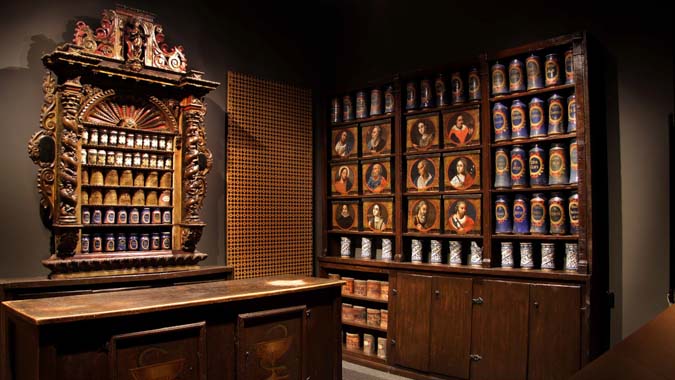
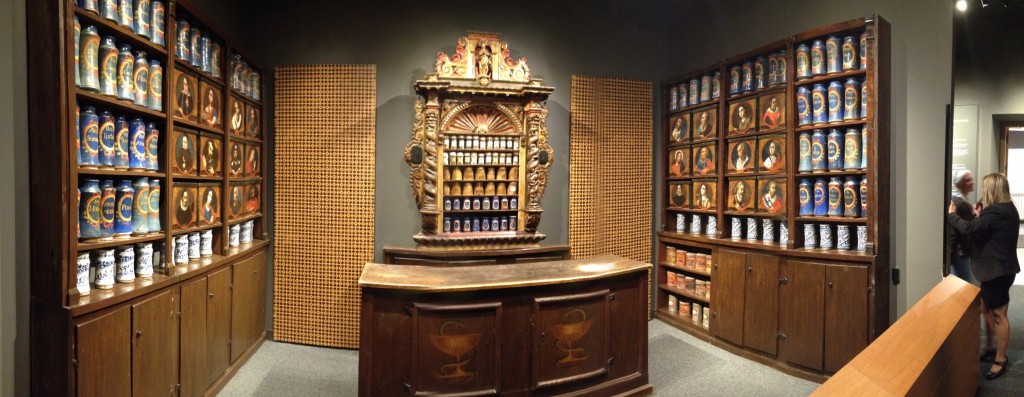
Today, the museum has a large collection of the albarellos, including 87 rare blue albarellos that were modernized and include painted labels of the drugs they contained. Along with the beautiful storage jars, the museum also features a gaudy baroque cupboard that looks more fitting for a king’s kitchen than a medieval clinic. The contrasts between the museum and modern pharmacies are striking, and the Esteve Pharmacy is a fascinating look into the artful world of medieval medicine.
 1
Like
Published at 6:42 PM Comments (0)
1
Like
Published at 6:42 PM Comments (0)
Unassuming from the outside, Spectacular on the inside...
Friday, November 8, 2024
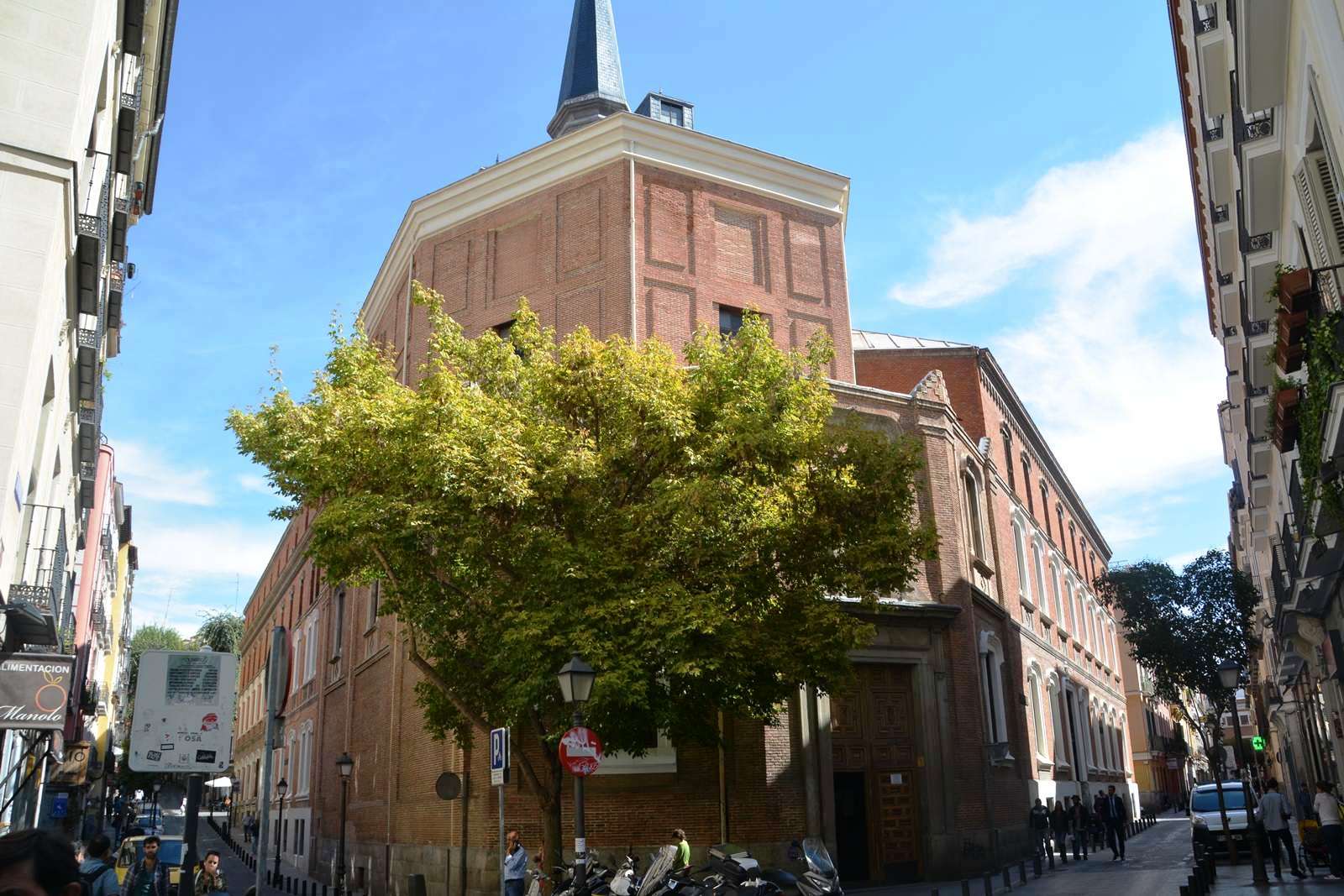
Unassuming from the outside, this small building goes practically unnoticed to most people who walk down Gran Via in Madrid. Yet right behind this important artery, there is a church whose austere façade reveals no clue as to the spectacularly breathtaking interior.
Inside the church, the domed ceiling and the walls are richly decorated with frescoes, which have led it to be referred to as “the Sistine Chapel of Madrid.” The elaborate frescoes depict the life and miracles of St. Anthony of Padua.
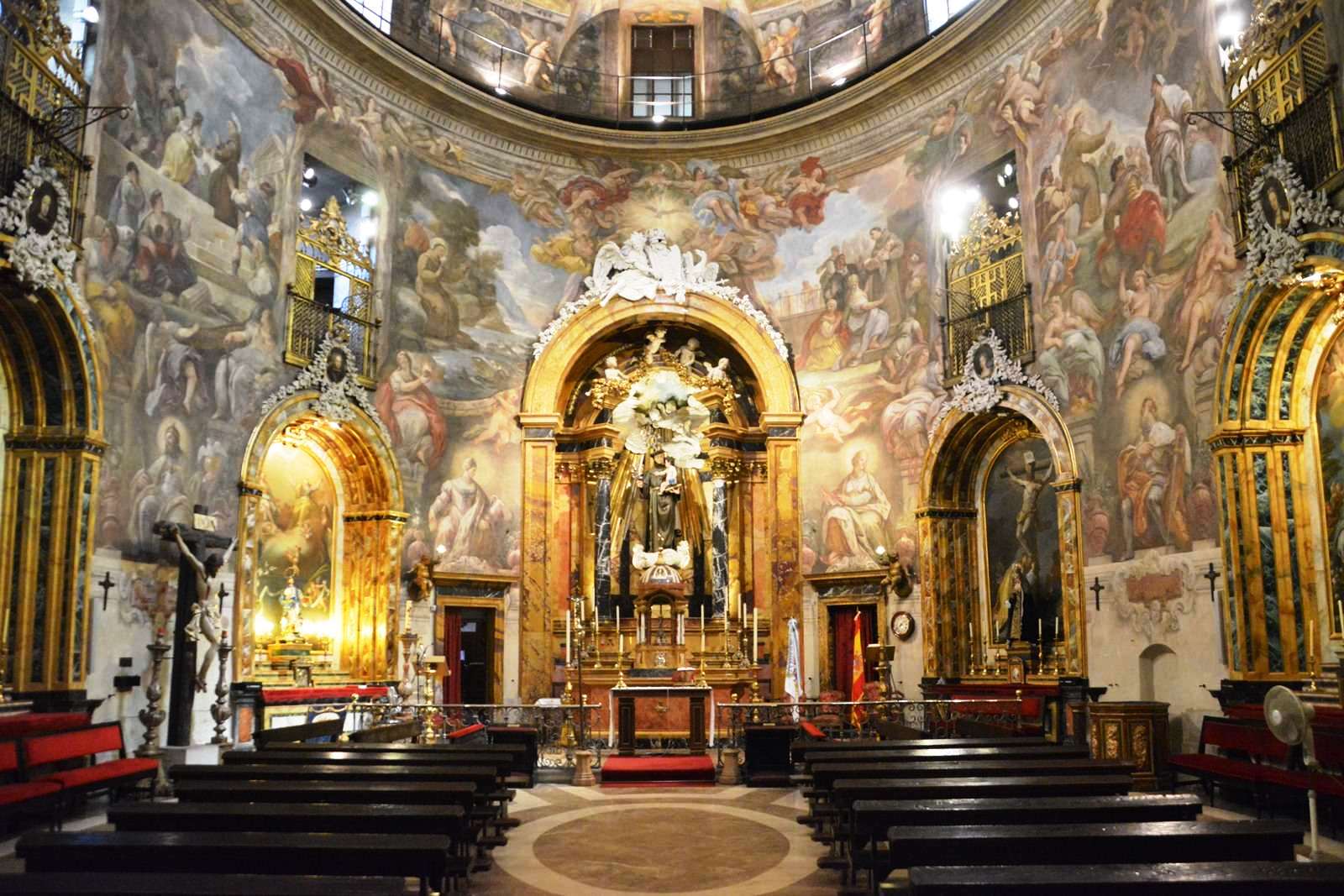
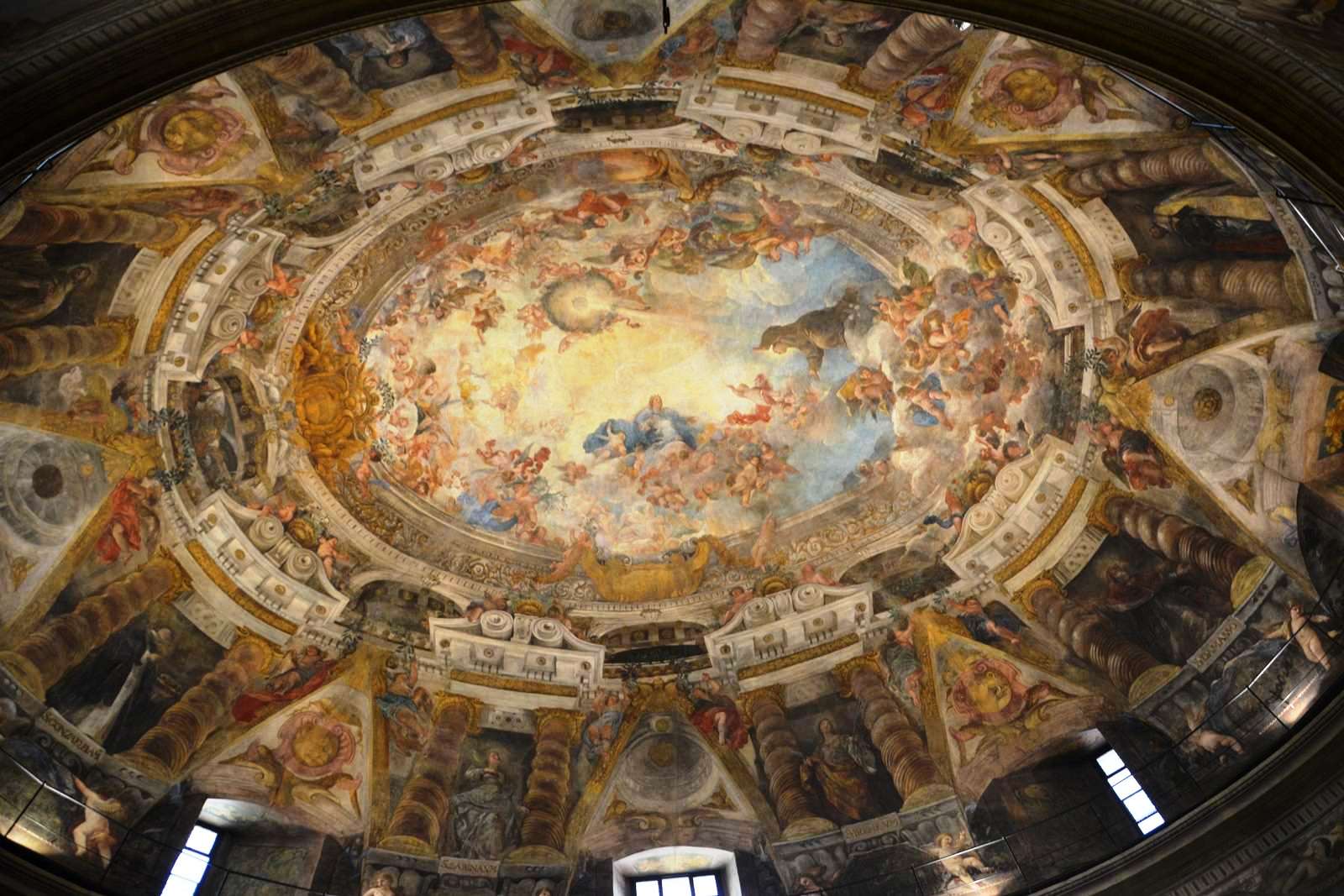
Built-in the 17th century, this church initially served as a hospital for Portuguese citizens who came to Madrid while Portugal was under Spanish rule. After Portuguese independence, it was dedicated to German pilgrims and its name was changed to the current name, Iglesia de San Antonio de los Alemanes (Church of Saint Anthony of the Germans).
Around 1660, the church’s dome began to be painted according to sketches by the Italian artists Coloma and Mitelli. The frescoes were started two years later, painted by Carreño de Miranda and Francisco de Rizzi, commissioned by King Philip IV of Spain.
A fresco of St. Anthony of Padua, a Franciscan born in Lisbon in 1195, occupies the most important place in the dome. He is depicted kneeling on a cloud receiving the Child Jesus and Virgin Mary with open arms. The different miracles of the saint are represented along the entire upper level of the church, while several sainted kings from history are represented below them.
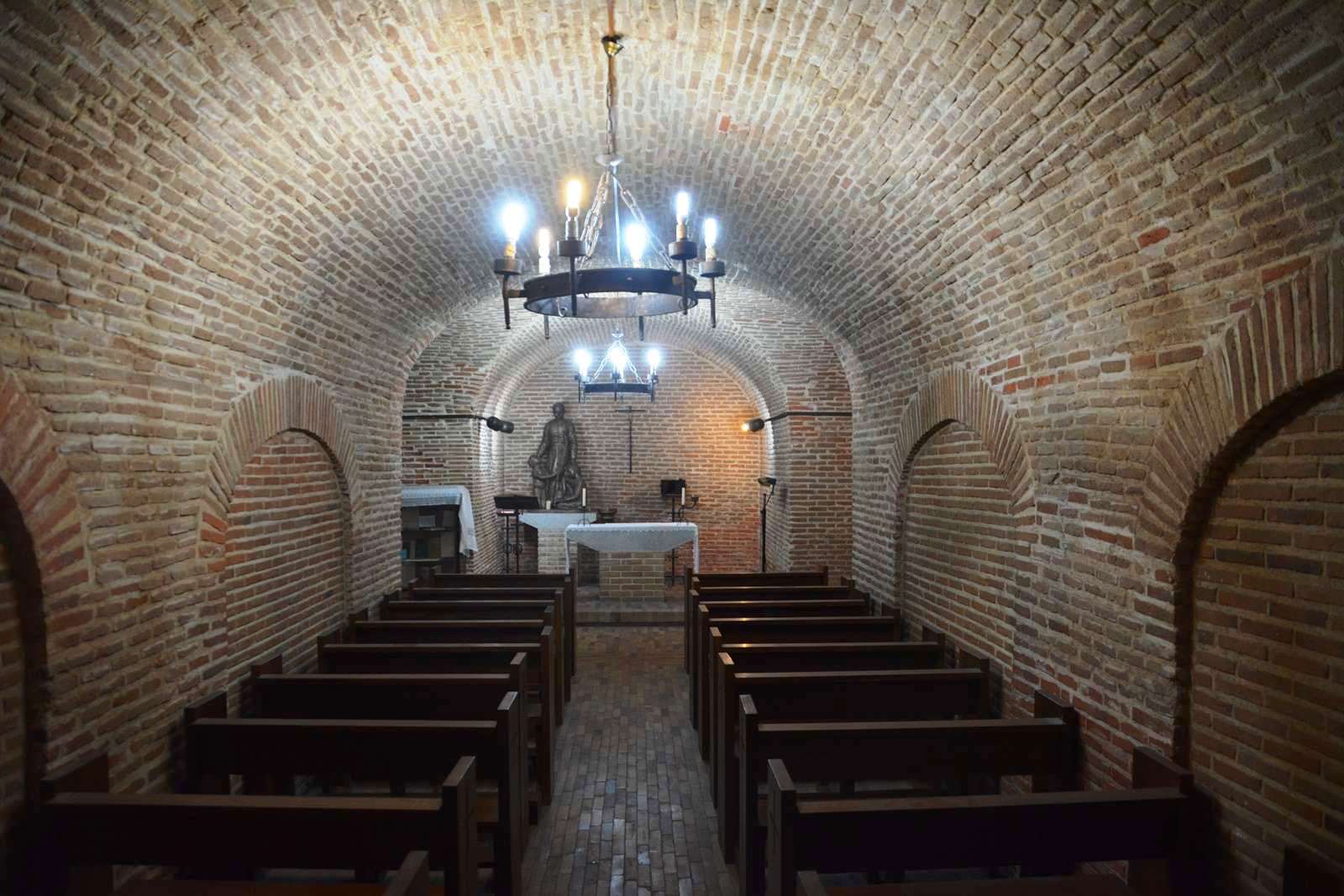
Under the church, there is a curious crypt with several niches that house corpses of the Spanish royal family, some dating back to the Middle Ages. Nearby there are more niches, where children and some unknown bodies were laid to rest.
The opening hours to visit the church are from Monday to Saturday from 10:30 a.m. to 2:00 p.m. Evenings and Sundays are dedicated to worship. Exceptionally, it may remain closed on certain dates.
A donation of €2 per person is requested to attend to the social purposes of the Brotherhood.
 1
Like
Published at 9:39 PM Comments (1)
1
Like
Published at 9:39 PM Comments (1)
God's Bridge
Saturday, November 2, 2024
Puentedey is a village in the province of Burgos whose name literally means “God’s bridge”. This town’s singularity resides in its location. As a matter of fact, it is situated on top of a natural rock arch; i.e. on a crag, which forms one of the most curious natural occurring bridges in Spain. Part of the town is built on top of the bridge, including its Romanesque church. This curious bridge is shaped by the river Nela, whose source is in the mountains of Somo and flows on into the river Ebro.
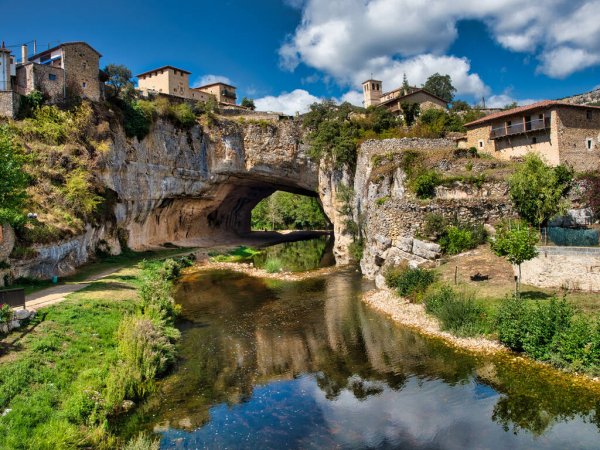
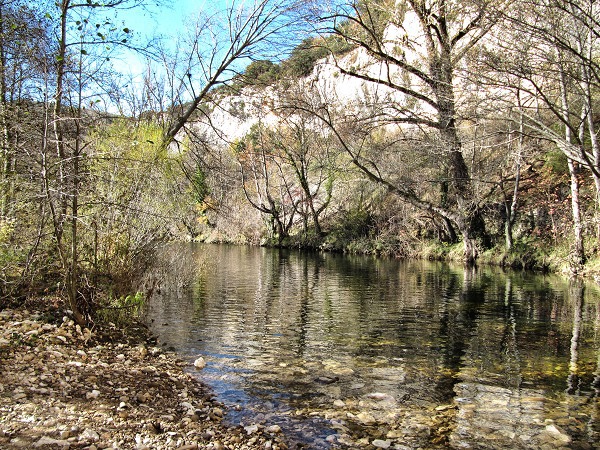
The arch was formed when the Nela River abandoned a long meander by carving its way through the hill. A fairly wide path runs through the arch alongside the river, letting you enjoy the sheer size of the arch from the directly beneath it. Just inside, you’ll find a sort of small, sandy beach which is an ideal spot for taking refuge from the sun in summer.
Not surprisingly, as it is limestone, it has several openings which discharge water during wet weather, sometimes with quite significant pressure. If you happen to visit be sure look up to admire the scenery, too. The village is nestled within a wonderful Karst landscape with impressive limestone bluffs towering high above it.
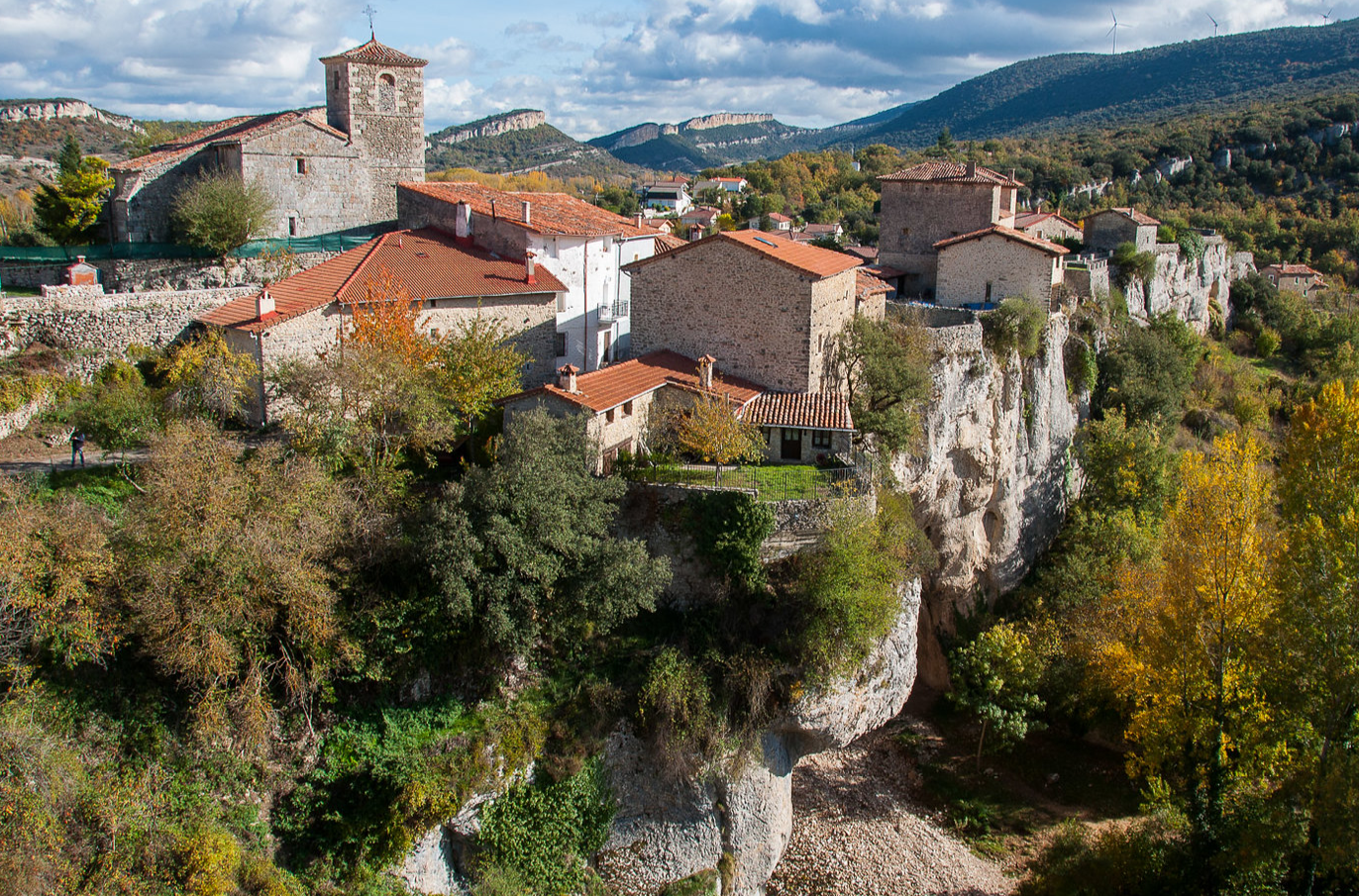
 2
Like
Published at 9:00 AM Comments (0)
2
Like
Published at 9:00 AM Comments (0)
Spam post or Abuse? Please let us know
|
|